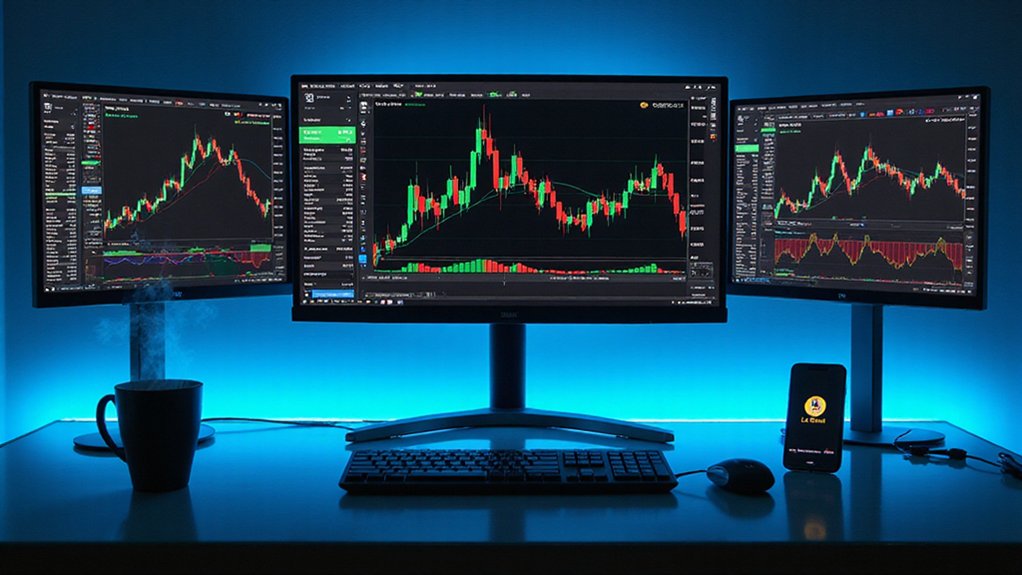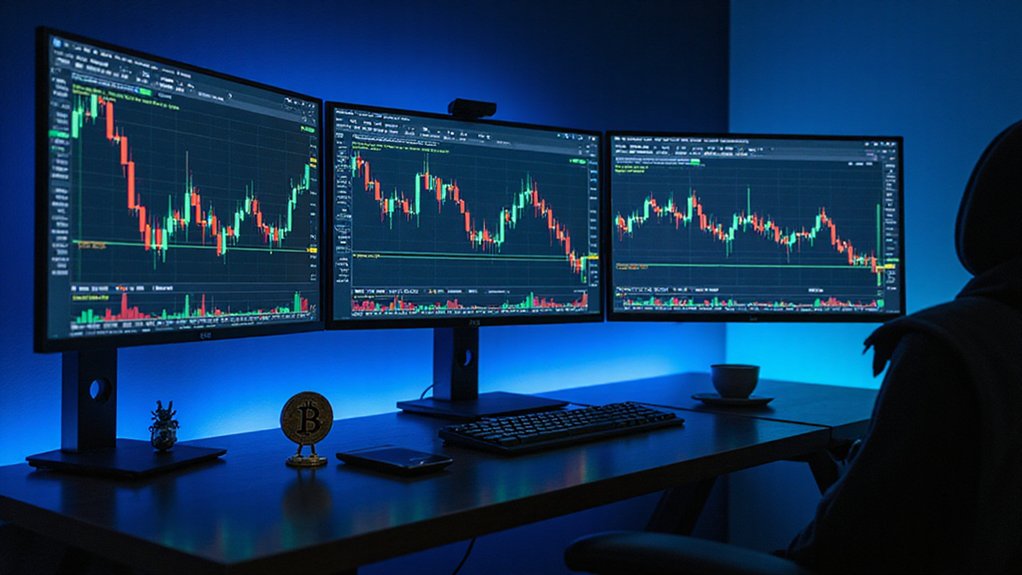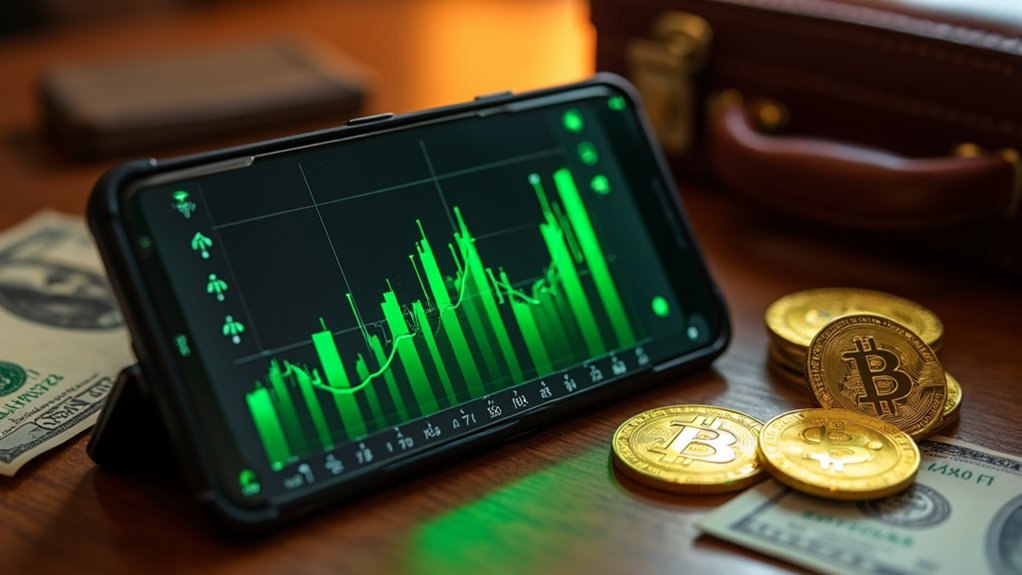LBank Exchange, operational since 2015, ranks among top cryptocurrency platforms serving 12 million traders across 210 countries. The British Virgin Islands-based exchange offers extensive services including spot, margin, and derivatives trading while supporting over 800 cryptocurrencies and 50+ fiat currencies. With $1.47 billion in 24-hour trading volume and robust security protocols, LBank maintains assets exceeding $1.71 billion while accommodating 20+ payment methods. The platform’s expansive offerings beckon traders seeking both established markets and emerging opportunities.

The labyrinthine world of cryptocurrency exchanges—where fortunes rise and fall with algorithmic precision—finds a notable contender in LBank Exchange, a platform established in 2015 that has since carved out a significant position in the digital asset marketplace.
Based in the British Virgin Islands with operational offices spanning Indonesia, the United States, Australia, and beyond, this exchange (owned and operated by LBK Blockchain Co., Limited) has assembled an impressive regulatory portfolio, including licenses from the National Futures Association and money services businesses in multiple jurisdictions.
LBank’s service architecture encompasses the standard cryptocurrency exchange offerings—spot and margin trading—while extending into derivatives, staking services, and an NFT platform.
Perhaps most intriguing is LBK Labs, which proffers investment opportunities in nascent crypto projects (a veritable petri dish of financial experimentation, one might say).
The platform’s currency ecosystem is remarkably extensive, supporting over 800 cryptocurrencies across more than 1,000 trading pairs, alongside 50+ fiat currencies—a thorough arsenal for traders of varying sophistication.
With approximately $1.47 billion in 24-hour trading volume and total assets exceeding $1.71 billion, LBank has secured its position among top-ranked exchanges on CoinMarketCap.
This market standing correlates with its substantial user base—over 12 million traders spanning 210 countries and regions, with a notable concentration in the Chinese market despite its global footprint. The exchange is trusted by millions of users worldwide, providing a reliable platform for cryptocurrency trading enthusiasts.
Security measures and compliance frameworks (those often-overlooked yet fundamental pillars of institutional credibility) appear robust, with the exchange implementing protocols designed to safeguard user assets while maneuvering the byzantine landscape of international financial regulations. Unlike some competitors such as HitBTC, LBank doesn’t offer a demo account for risk-free practice trading.
The platform’s payment infrastructure accommodates over 20 methods, including standard credit cards, ApplePay, and traditional bank transfers—a concession, perhaps, to the reality that cryptocurrency adoption still requires on-ramps from conventional financial systems.
For traders seeking a thorough exchange with substantial market depth and diverse offerings, LBank presents a compelling, if complex, proposition in the ever-evolving digital asset ecosystem. While the exchange claims a 2016 launch date, investigations reveal the company’s domain was registered in September 2017, suggesting discrepancies in its stated history.
Frequently Asked Questions
Is LBANK Exchange Regulated in the United States?
Yes, LBank Exchange is regulated in the United States.
According to available information, the platform has secured licensing from relevant financial authorities in several jurisdictions, including the USA.
This regulatory status obligates LBank to comply with American financial regulations, particularly AML and KYC requirements.
The exchange’s operations in the U.S. market demonstrate its commitment to maintaining regulatory compliance in a jurisdiction known for its rigorous oversight of cryptocurrency platforms.
How Does Lbank’s Customer Support Response Time Compare to Competitors?
LBank’s 24/7 customer support aims to provide timely assistance, though concrete comparative response metrics remain curiously elusive.
While the exchange services over 15 million users across 210+ countries—an impressive reach—this volume inevitably strains support resources.
User feedback presents a mixed portrait: some praise prompt resolutions while others lament delays.
LBank’s robust API infrastructure suggests technical capacity for efficiency, yet like most exchanges, response times likely fluctuate based on query complexity and compliance requirements.
Can I Recover Lost 2FA Access for My LBANK Account?
Users can indeed recover lost 2FA access for LBank accounts, though the process (like most security recovery procedures in crypto) requires jumping through several verification hoops.
Contact LBank’s customer support, who will guide recovery through account verification, documentation submission, and possibly utilizing backup keys if previously saved.
While not instantaneous—expect some trading restrictions and withdrawal delays during this process—recovery is designed to balance accessibility with necessary security protocols to prevent unauthorized access attempts.
Does LBANK Offer Crypto Tax Reporting Tools?
LBank doesn’t offer native tax reporting tools—a significant omission in today’s regulatory climate.
Instead, users must leverage third-party solutions like Koinly and Blockpit, which integrate with LBank to import transaction data for compliant tax reporting.
While the exchange reports to authorities via forms like 1099-DA, the onus remains on traders to calculate their obligations.
Given blockchain’s transparency and increasing IRS scrutiny, this DIY approach seems somewhat precarious for active traders managing substantial positions.
What Insurance Protections Exist for Funds on LBANK Exchange?
LBank offers two primary insurance mechanisms: the Insurance Fund, which covers losses when client accounts go negative using collateral from non-bankrupt clients’ fees, and the $100 million Futures Risk Protection Fund, activated during significant price deviations.
The latter provides 120% compensation for qualifying liquidations, covering the top 100 futures pairs by market cap.
While these protections appear robust on paper, prudent traders might still question their efficacy during extreme market conditions.









